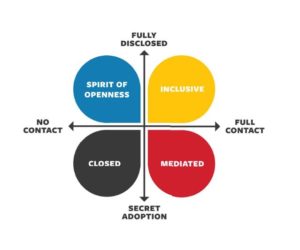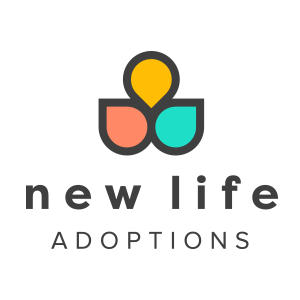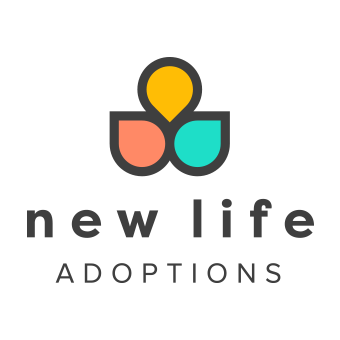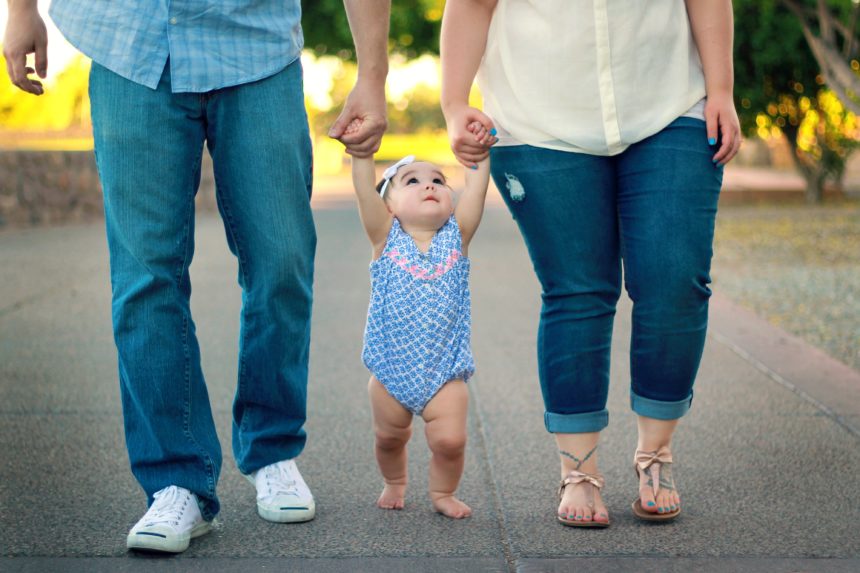Openness in adoption is a lifelong connection between a birth family and an adoptive family. The shared love for the child connects these families. This is often referred to as the extended family of adoption. Much like traditional extended family, there is a connection no matter how much ongoing contact there may be.
Contact has long been the defining factor of openness, viewing it solely as the amount of direct interaction the parties have with one another. Adoption is often viewed on a spectrum from closed to open. This is a model that focuses on contact as equating to openness. However, openness in adoption is more than just contact. It is also the way in which we talk about adoption, how often we bring it up, and whether or not we make space for the child to share what they are thinking. These can all be done regardless of the amount of ongoing contact there is with the birth family.
Inclusive Family Support Model
At New Life Adoptions, we have begun using a new model, The Inclusive Family Support Model (IFSM), to better explain openness in adoption. The IFSM was conceived and authored by two adoptees: Angela Tucker, director of Post-Adoption Services at Amara Family Services and Dr. JaeRan Kim of the University of Washington Tacoma. This model shows how everyone can, and should, have openness in their adoption.

About The Quadrants
The Inclusive Family Support Model views open adoption as a grid rather than a spectrum. There are four quadrants that show both the level of contact and the level of openness in an adoption. In a closed adoption there is no contact and no spirit of openness. In a mediated adoption, there is contact, but it is more out of obligation rather than a heartfelt relationship.
The upper quadrants show that you can have openness with or without contact. An adoptive family can create an atmosphere of openness, regardless of how much contact there is with the birth family. In an inclusive adoption, there is both contact and a relationship. However, when a relationship is not possible, is unsafe, or contact has been paused, there is still the option to have a spirit of openness. Adoptive parents can provide space for their child to discuss his or her adoption as they support their child on this lifelong journey.
Contact in Adoption
Open adoption relationships, like all relationships, are fluid and fluctuate over time based on life changes and the needs of everyone involved. So, what does contact look like? It looks different for each relationship. It some situations, it includes updates and pictures twice a year and seeing each other 1-2 times a year. In other situations, it includes frequent contact with no set amount. Sometimes this looks like weekly or monthly texts and seeing each other 4-6 times a year, as everyone’s schedule allows.
Openness in Adoption
What does openness look like? Open adoption is the legalities and amount of contact whereas openness in adoption is intentionally creating a vibe or spirit of openness regardless of how much contact there is with the birth family. Openness should be present in every adoption, even when – and especially when – there is no contact. This is a spirit of openness. Openness strengthens the adoptee’s sense of identity, encourages attachment to his or her adoptive parents, and decreases the sense of abandonment by their birth parents.
For more information about this model, you can watch this short video here.




